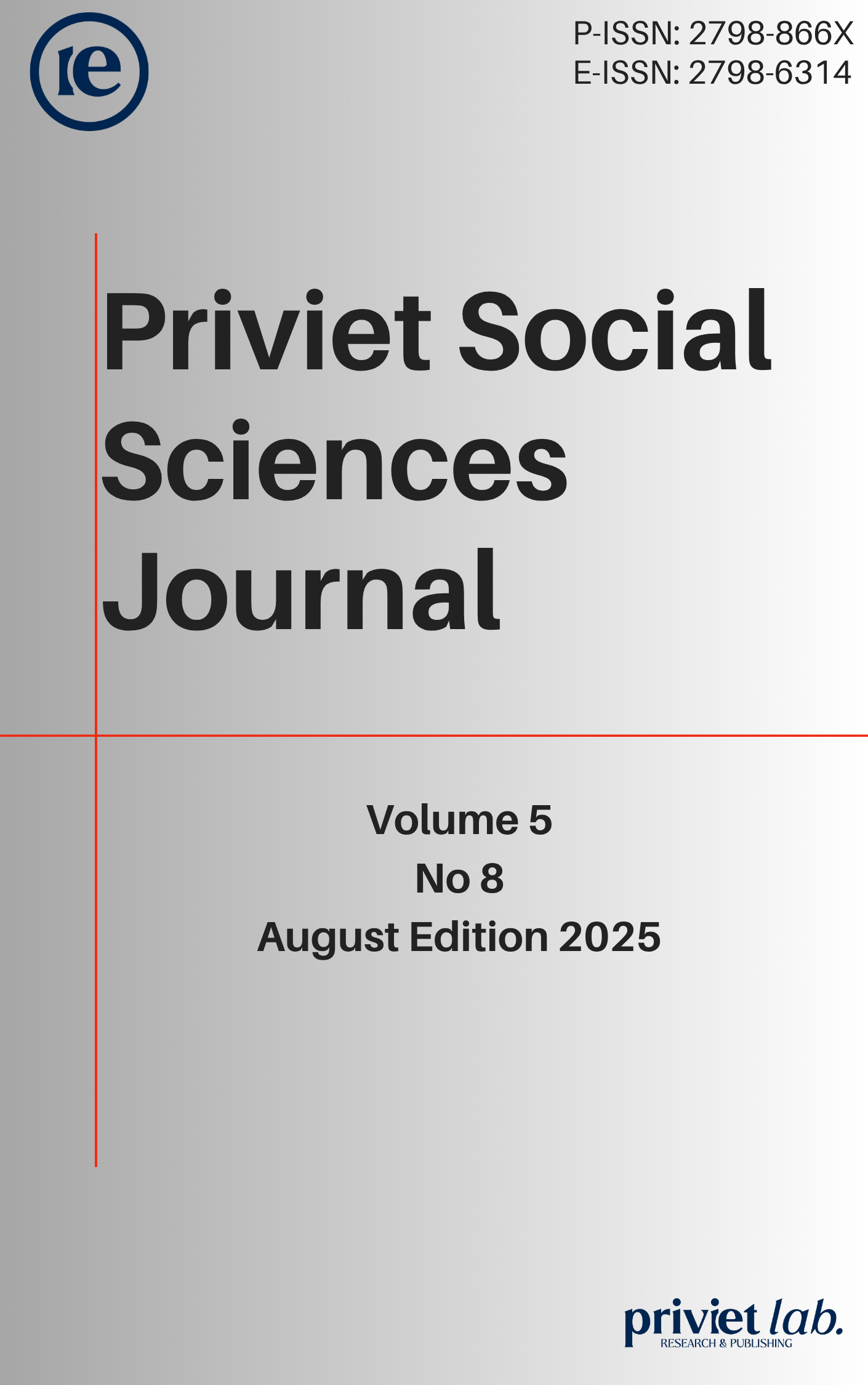Mass media crisis management strategy and reputational impact in the era of global digital disruption
DOI:
https://doi.org/10.55942/pssj.v5i8.523Keywords:
Digital Disruption, Crisis Management, Media Reputation, Strategic Communication, Journalistic EthicsAbstract
The rapid evolution of digital technology has significantly reshaped the way mass media communicate and manage crises, especially when unexpected situations arise and spread quickly. Digital disruption has not only accelerated the flow of information, but also increased the risk of reputational damage for media organizations. This study explores crisis management strategies adopted by several national media outlets in response to incidents involving misinformation, public backlash on social media, and breaches of journalistic ethics. Using a qualitative case study approach, this research examines how these media institutions address challenges and their impact on public trust and institutional reputation. The findings indicate that media organizations equipped with adaptive and technology-integrated crisis protocols are more capable of minimizing reputational harm. This underscores the need for media companies to modernize their crisis response systems, invest in crisis communication training for journalists, and embed digital tools into their corporate communication strategies. Beyond its practical implications, this study contributes to the broader field of strategic communication in an era marked by digital complexity and global interconnectedness.
References
Bukar, U. A., Jabar, M. A., Sidi, F., Haizan, R. N. H. N., & Abdullah, S. (2021). Social media crisis communication model for building public resilience: A preliminary study. Business Information Systems, 1(1), 1–15. https://doi.org/10.52825/bis.v1i.55
Business Continuity Institute. (2024). BCI crisis management report 2024. Retrieved from https:// www.thebci.org/resource/bci-crisis-management-report-2024.html
Carter, N., Bryant-Lukosius, D., DiCenso, A., Blythe, J., & Neville, A. J. (2014). The use of triangulation in qualitative research. Oncology Nursing Forum, 41(5), 545-547. https://doi.org/10.1188/14.onf.545-547
Christensen, C. M., Raynor, M. E., & McDonald, R. (2015). What is disruptive innovation? Harvard Business Review, 93(12), 44–53. https://hbr.org/2015/12/what-is-disruptive-innovation
Coombs, W. T. (2007). Ongoing crisis communication: Planning, managing, and responding (2nd ed.). SAGE Publications. https://search.worldcat.org/title/1268506041
Deloitte. (2025). digital media trends: Social platforms are becoming a dominant force in media and entertainment. Retrieved from https:// consumption-habits-survey/2025.html
Denzin, N. K. (2023). Triangulation: Combining multiple methods to overcome biases in qualitative research. Qualitative Inquiry, 29(4), 312–325.
Ruiz, D. C. (2023). Disinformation on digital media platforms: A market-shaping approach. New Media & Society, 0(0). https://doi.org/10.1177/14614448231207644
Momin, K. A., Kays, H. M. I., & Sadri, A. M. (2022). Identifying crisis response communities in online social networks for compound disasters: The case of Hurricane Laura and COVID-19. Journal of Crisis informatics, 10(3), 129–146. https://doi.org/10.1177/03611981231168120
Park, Y.-E. (2022). Developing a COVID19 crisis management strategy using news media and social media in big data analytics. Journal of the Association for Information Science and Technology, 73(1), 112–130. https://doi.org/10.1177/08944393211007314
Priya, A. (2021). Case study methodology of qualitative research: Key attributes and navigating the conundrums in its application. Sociological Bulletin, 70(1), 94-110. https://doi.org/10.1177/0038022920970318
Schlunegger, M. C., Zumstein-Shaha, M., & Palm, R. (2024). Methodological and data-analysis triangulation in case studies: A scoping review. Qualitative Health Research, 34(10), 1456-1471. https://doi.org/10.1177/01939459241263011
Stenger, Thomas. (2014). Social media and online reputation management as practice: First steps towards social CRM? International Journal of Technology and Human Interaction, 10(3), 41-56. https://doi.org/10.4018/ijthi.2014100104
Tasselli, S. (2023). Leaders’ networking behaviours in a time of crisis: A qualitative study on the frontline against COVID19. Journal of Management Studies. 60, 120-173. https://doi.org/10.1111/joms.12884.
The Gear Consulting. (2024, November 20). Qualitative case study methodology. The Gear Consulting. https://thegearconsulting.com/qualitative-case-study-methodology/
Upadhyay, S., & Upadhyay, N. (2023). Mapping crisis communication in the communication research: What we know and what we don't know. Humanities and Social Sciences Communications, 10(1), 1–15. https://doi.org/10.1057/s41599-023-02069-z
Urakami, J., Kim, Y., Oura, H., & Seaborn, K. (2022). Finding strategies against misinformation in social media: A qualitative study. Journal of Information Science and Theory, 31(2), 45–67. https://doi.org/10.1145/3491101.3519661.
Yin, R. K. (2018). Case Study Research and Applications: Design and Methods (6th ed.). SAGE. https://www.scirp.org/reference/referencespapers?referenceid=2914980
Downloads
Published
How to Cite
Issue
Section
License
Copyright (c) 2025 Suhendra Suhendra, Ivana Ivana, Yana Mahdiana

This work is licensed under a Creative Commons Attribution 4.0 International License.

















